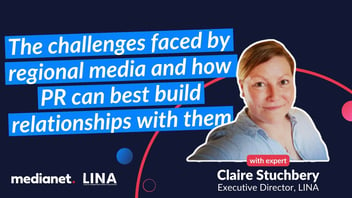Cultural diversity and Australian journalists: a reflection on representation in the media
Every year Australians celebrate Harmony Week and Australia's cultural diversity. With over half of Australians born overseas, or at least with a parent who was born overseas, it is an important event in the calendar to promote inclusiveness, respect and belonging for all Australians.
Also this month, the genre-blending Everything Everywhere All at Once swept the Oscars, winning seven categories including Best Picture at the 95th Academy Awards.
The film’s success is a groundbreaking win for on-screen diversity, with Michelle Yeoh making history as the first Asian woman to win best actress. Ke Huy Quan also won best supporting actor, and the film itself follows the story of an immigrant family in the US.
It’s exciting (for once!) to have a positive story about on-screen diversity, and while it’s a small step within the industry, hopefully the success of film’s such as this will become increasingly more common.
Events such as Harmony Week and the Oscars win bring conversation globally in the film industry, but we should also take the opportunity to reflect on cultural diversity and representation on other highly visible platforms, such as the news media.
Medianet recently released our annual Australian Media Landscape Report, and the survey of over 1,000 Australian journalists has some interesting, sometimes disturbing, but important findings on the experiences of culturally diverse journalists.
Firstly, how diverse is the Australian media industry?
We asked respondents to identify their ethnic backgrounds from a list used by the Australian government in the last census. Australian non-Indigenous was selected by 71% of respondents, with English, Scottish and Irish following as the most common ethnic backgrounds. Most non-Anglo-Celtic backgrounds were represented in a smaller proportion to which they appear on the census, indicating that we still have some way to go to having a media that accurately reflects Australian society.
Last year Medianet heard from ABC Digital Journalist Angelica Silva about her experiences with the media both as a news consumer growing up in Australia and now as a journalist.
“My parents are from Singapore and my grandparents are Indian. While I feel incredibly lucky to have experienced these cultures blend with my Aussie upbringing, there were instances in high school and even after where I was treated and viewed differently for having darker skin,” Angelica said.
“We are so fortunate to have a handful of journalists of colour who paved the way for journalists like me. But that's just it. We only have a handful — a handful amongst a sea of Anglo-Celtic journalists.”
Racial discrimination, prejudice and abuse
Unfortunately, representation is not the only serious problem related to race and ethnicity that emerged in the survey findings.
Of the 243 respondents who reported being of an ethnic background other than Australian non-Indigenous, New Zealander, English, Scottish or Irish, 22% said they had experienced racial discrimination, prejudice or abuse as part of their media work (12% of overall respondents had experienced this).
Respondents aged 60 to 69 reported the highest rates of racial discrimination, prejudice or abuse. Sadly this could be an indication of some of the extra challenges elderly people face in our society and workforce today.
But perhaps it is a somewhat more optimistic finding, signaling many of these shocking experiences are more historical, with cultural changes providing a more positive experience for younger journalists since they began their media careers.
Addressing representation and support
While representation may seem to be a small problem compared to the more shocking issues of discrimination and abuse here, journalists identified how it may actually be part of the root of the problem.
Survey respondents were asked to respond how they think the media industry or their workplace could improve representation and support for people of culturally and linguistically diverse backgrounds (CALD). The overwhelming majority of responses suggested more diverse hiring is needed, particularly in management or board positions
“It’s structural, it’s about ensuring there are people from diverse background given early career training so there are pathways that lead to skills and then positions.” — Anonymous survey respondent.
Some also suggested addressing systemic barriers, providing more support within organisations and implementing quotas for diversity, although others raised how efforts needed to extend beyond “tokenism”.
A benefit for everyone
News and the media are one of the most powerful cultural influences to exist. Having a diverse media is key to ensuring this important institution is an accurate reflection of society.
As Angelica Silva pointed out:
“Australia prides itself on being a multicultural society. Yet when I was growing up here, television did not reflect the make-up of the wider community. This meant that the stories of multicultural Australians were rarely being told and when they were, it was often in a negative or insensitive light that didn't accurately reflect the community,” Angelica said.
“How is the news meant to look and sound like modern Australia when you don't have journalists who come from different ethnicities, backgrounds, sexualities, and disabilities?”
We all will benefit from working to remove the barriers that prohibit many talented journalists of diverse cultural backgrounds from entering or thriving in the media.
Let’s hope the next Australian Walkley awards ceremony reflects the same triumph for diversity in Australian media as the 2023 Oscars, and more importantly, that the experiences, seniority and positions for culturally diverse Australians in the media continue to improve.




